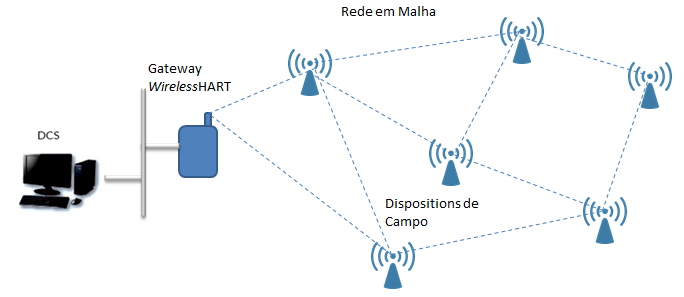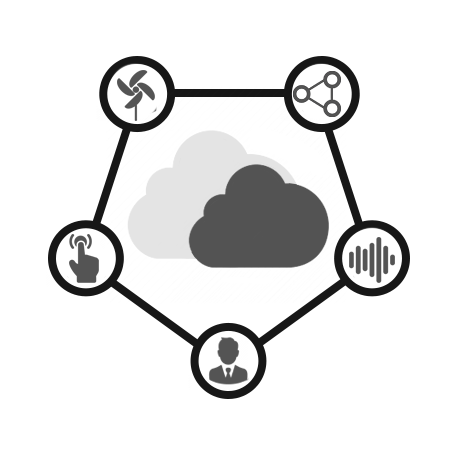The next wave in the era of computing will be outside the realm of the traditional desktop. In the Internet of Things (IoT) paradigm, many of the objects that surround us will be on the network in one form or another.
The term Internet of Things was first coined by Kevin Ashton in 1999 in the context of supply chain management. However, in the past decade, the definition has been more inclusive covering wide range of applications like healthcare, utilities, transport, etc. Although the definition of ‘Things’ has changed as technology evolved, the main goal of making a computer sense information without the aid of human intervention remains the same.
Ubiquitous computing in the next decade
The effort by researchers to create a human-to-human interface through technology in the late 1980s resulted in the creation of the ubiquitous computing discipline, whose objective is to embed technology into the background of everyday life.
The creation of the Internet has marked a foremost milestone towards achieving ubicomp’s vision which enables individual devices to communicate with any other device in the world. The inter-networking reveals the potential of a seemingly endless amount of distributed computing resources and storage owned by various owners.
Definitions, trends and elements
Definitions
As identified by Atzori et al, Internet of Things can be realized in three paradigms—internet-oriented (middleware), things oriented (sensors) and semantic-oriented (knowledge). Although this type of delineation is required due to the interdisciplinary nature of the subject, the usefulness of IoT can be unleashed only in an application domain where the three paradigms intersect.
Trends
Internet of Things has been identified as one of the emerging technologies in IT as noted in Gartner’s IT Hype Cycle. is a way to represent the emergence, adoption, maturity, and impact on applications of specific technologies. It has been forecasted that IoT will take 5–10 years for market adoption.
The popularity of different paradigms varies with time. The web search popularity, as measured by the Google search trends during the last 10 years for the terms Internet of Things, Wireless Sensor Networks and Ubiquitous Computing are shown in Fig. 3 [11]. As it can be seen, since IoT has come into existence, search volume is consistently increasing with the falling trend for Wireless Sensor Networks. As per Google’s search forecast, this trend is likely to continue as other enabling technologies converge to form a genuine Internet of Things.
IoT elements
We present a taxonomy that will aid in defining the components required for the Internet of Things from a high level perspective. Specific taxonomies of each component can be found elsewhere. There are three IoT components which enables seamless ubicomp:
(a) Hardware—made up of sensors, actuators and embedded communication hardware
(b) Middleware—on demand storage and computing tools for data analytics and
(c) Presentation—novel easy to understand visualization and interpretation tools which can be widely accessed on different platforms and which can be designed for different applications.
Wireless Sensor Networks (WSN)
Recent technological advances in low power integrated circuits and wireless communications have made available efficient, low cost, low power miniature devices for use in remote sensing applications. The combination of these factors has improved the viability of utilizing a sensor network consisting of a large number of intelligent sensors, enabling the collection, processing, analysis and dissemination of valuable information, gathered in a variety of environments. Active RFID is nearly the same as the lower end WSN nodes with limited processing capability and storage.
(a)WSN hardware— Typically a node (WSN core hardware) contains sensor interfaces, processing units, transceiver units and power supply.
(b)WSN communication stack— The nodes are expected to be deployed in an ad-hoc manner for most applications. Designing an appropriate topology, routing and MAC layer is critical for the scalability and longevity of the deployed network.
c)WSN Middleware— A mechanism to combine cyber infrastructure with a Service Oriented Architecture (SOA) and sensor networks to provide access to heterogeneous sensor resources in a deployment independent manner.
(d)Secure Data aggregation—An efficient and secure data aggregation method is required for extending the lifetime of the network as well as ensuring reliable data collected from sensors.
Applications
There are several application domains which will be impacted by the emerging Internet of Things. The applications can be classified based on the type of network availability, coverage, scale, heterogeneity, repeatability, user involvement and impact. We categorize the applications into four application domains:
(1) Personal and Home; The sensor information collected is used only by the individuals who directly own the network.
(2) Enterprize; We refer to the ‘Network of Things’ within a work environment as an enterprize based application. Information collected from such networks are used only by the owners and the data may be released selectively. Environmental monitoring is the first common application which is implemented to keep track of the number of occupants and manage the utilities within the building
(3) Utilities; The information from the networks in this application domain is usually for service optimization rather than consumer consumption. It is already being used by utility companies (smart meter by electricity supply companies) for resource management in order to optimize cost vs. profit.
(4) Mobile. Smart transportation and smart logistics are placed in a separate domain due to the nature of data sharing and backbone implementation required. Urban traffic is the main contributor to traffic noise pollution and a major contributor to urban air quality degradation and greenhouse gas emissions. Traffic congestion directly imposes significant costs on economic and social activities in most cities.
Cloud centric Internet of Things
he vision of IoT can be seen from two perspectives—‘Internet’ centric and ‘Thing’ centric. The Internet centric architecture will involve internet services being the main focus while data is contributed by the objects. In the object centric architecture, the smart objects take the center stage. In our work, we develop an Internet centric approach. A conceptual framework integrating the ubiquitous sensing devices and the applications. In order to realize the full potential of cloud computing as well as ubiquitous sensing, a combined framework with a cloud at the center seems to be most viable.
source: Internet of Things (IoT): A vision, architectural elements, and future directions



